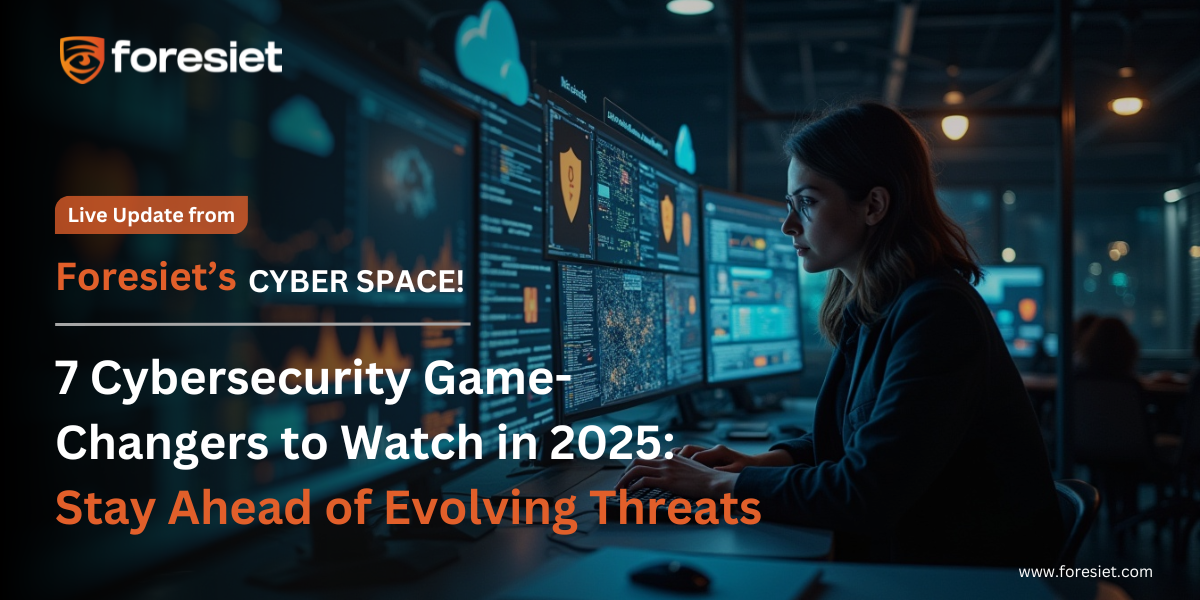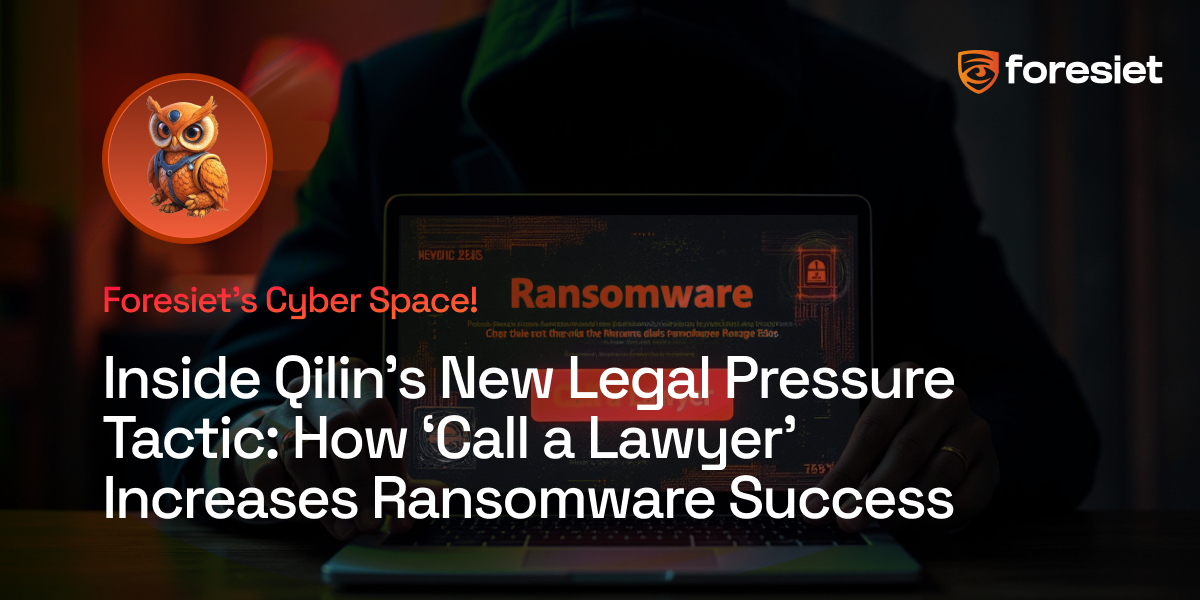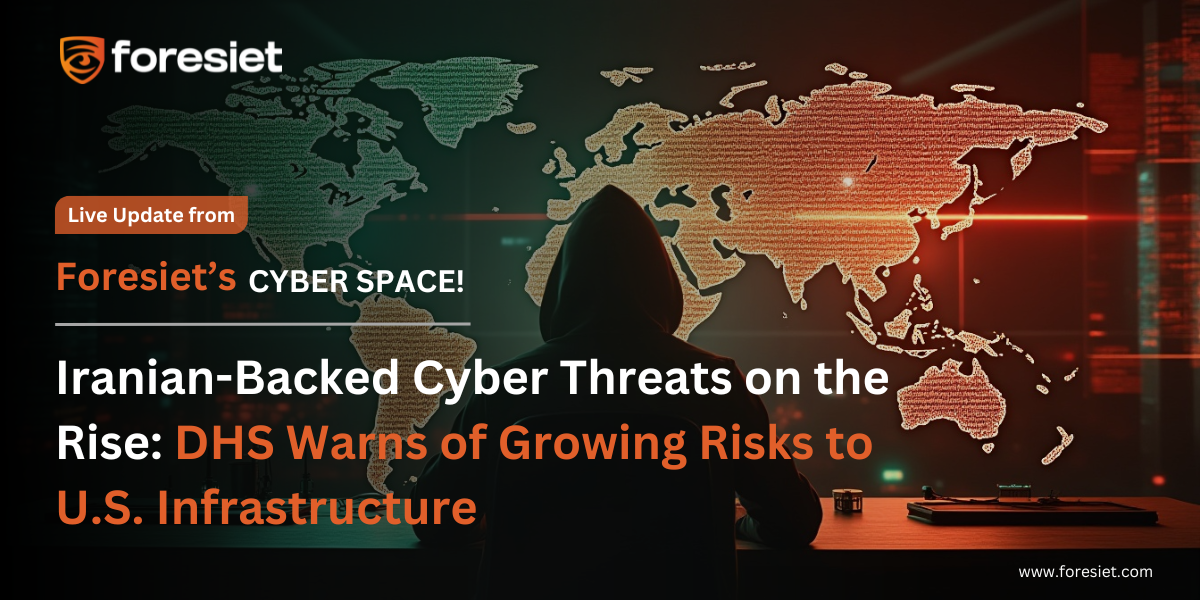7 Cybersecurity Game-Changers to Watch in 2025: Stay Ahead of Evolving Threats

Introduction
In today's hyper-connected world, cybersecurity is no longer an IT behind-the-scenes issue—it's a business imperative. With remote work being the new standard, the rollout of smart technologies speeding up, and cybercriminals employing AI, the threat landscape is evolving faster than ever in history. Firewalls and traditional antivirus tools are no longer sufficient for organizations to rely on. The future demands smarter, proactive, and highly integrated solutions to cybersecurity.
This blog covers seven revolutionary cybersecurity trends that are shaping 2025 and the future. You're a tech leader, a digital transformation specialist, or an owner of a small business--you'll want to keep tabs on these trends to bolster your digital defenses and stay ahead of the curve in an era of increasing cyber sophistication.
- Remote Work Security: Securing the Decentralized Office
With over 11% of American companies completely remote and 27.5% operating in hybrid, remote workers are no longer a short-term phenomenon. Decentralization also comes with critical risks where sensitive data are accessed through home networks and private devices.
Today, organizations must implement comprehensive remote-work security policies that merge VPNs, endpoint security, and adaptive access controls. Cybersecurity trends being introduced include:
- Context-aware access management
- Compromised data tracking in real time
- Cloud-native security controls for elastic security
- AI-Powered Threats Demand Smarter Defenses
AI is no longer merely a defenders' tool—it is now also used by attackers since they employ generative AI to generate highly convincing phishing emails and automate social engineering attacks. Between 2024 alone, the phishing attacks grew more than 50% as over 1.76 billion malicious emails were launched globally.
To combat that, businesses need to invest in threat intelligence solutions that can detect patterns that AI-piloted attacks have. Cybersecurity professionals will have to become certified in AI threat detection and forensic analysis in order to stay ahead of evolving threats.
- IoT, Cloud, and Mobile: The Triple Threat
By December 2025, the number of smart devices globally is predicted to be more than 1.8 billion. While technologies like these are convenient and innovative, they also offer a broad attack surface for cybercriminals.
Cloud infrastructure misconfigurations, insecure IoT devices, and mobile app vulnerabilities are typical targets. Employing layered defense solutions such as:
- Endpoint detection and response (EDR)
- Network segmentation
- Continuous digital footprint analysis
will be essential to deflect multi-vector attacks.
- Open Source: Innovation Meets Risk
Though open-source components offer flexibility and agility in software development; they lack proper security scrutiny. In fact, up to 90% of corporate applications today use open-source libraries, thereby making them an easy target for supply chain attacks.
Organizations must institute dark web monitoring and darknet surveillance services to detect leaked credentials or source code. Conducting regular code audits and applying software composition analysis (SCA) tools are of utmost importance in this setting.
- Next-Generation MFA: Going Beyond SMS-Based Authentication
Multi-Factor Authentication (MFA) remains necessary but must move beyond legacy SMS-based methods, which are increasingly vulnerable to SIM-swapping and phishing.
Future-proof MFA solutions in 2025 are:
- Biometric verification
- Hardware tokens
- Geolocation-based app-based authentication
Firms that fail to innovate MFA expose themselves to credential-based attacks, making it important to continually review user authentication practices.
- DDoS Attacks on the Rise: Mitigation Is Mission-Critical
From 2022 to 2023, DDoS attacks increased over 109%. With increasingly more business relying on digital infrastructure, even a few minutes of downtime can cost millions in revenue and customer trust.
Companies are now spending on real-time DDoS mitigation platforms that use behavioral analytics to detect and disable traffic anomalies before they hit critical systems. Cloud-based scrubbing centers and AI-enabled automated response are becoming the standard.
- Trust and Truth: The New Battleground for Cyber Defense
In the age of deepfakes and disinformation, establishing trust in digital content is more critical than ever before. Businesses need to go beyond minimum security to establish data authenticity and safeguard their reputations.
Preventive measures such as:
- Brand impersonation defense solutions
- Blockchain-validated content authentication
- AI-powered brand protection services
are gaining popularity as businesses shift their focus from only data protection to maintaining digital integrity.
Foresiet Insight: Unified Intelligence for Digital Protection
Platforms like Foresiet offer end-to-end cyber defense solutions, allowing organizations to track digital threats in real-time, conduct online risk assessments , and actively identify stolen credentials and brand impersonation attempts. Their single dashboard approach is most ideal for small and medium-sized businesses looking to enhance cybersecurity efforts within a tight budget.
Conclusion: The Future Belongs to the Proactive
The 2025 cyber threat landscape demands more than defense—it demands vision. From AI-driven phishing to the exposure of remote workforces, organizations must move from reactive to proactive security strategies.
Cybersecurity is no longer an afterthought or a checkbox for compliance; it's an ongoing commitment to protecting your digital environment and maintaining customer trust. Whether you're spending on brand defense, monitoring compromised data, or cloud infrastructure security, being knowledgeable and prepared is your strongest competitive edge.
Start implementing smarter, scalable cybersecurity solutions today and start building towards digital resilience.
About us!
Foresiet is the pioneering force in digital security solutions, offering the first integrated Digital Risk Protection SaaS platform. With 24x7x365 dark web monitoring and proactive threat intelligence, Foresiet safeguards against data breaches and intellectual property theft. Our robust suite includes brand protection, takedown services, and supply chain assessment, enhancing your organization's defense mechanisms. Attack surface management is a key component of our approach, ensuring comprehensive protection across all vulnerable points. Compliance is assured through adherence to ISO27001, NIST, GDPR, PCI, SOX, HIPAA, SAMA, CITC, and Third Party regulations. Additionally, our advanced antiphishing shield provides unparalleled protection against malicious emails. Trust Foresiet to empower your organization to navigate the digital landscape securely and confidently.
Protect your brand, reputation, data, and systems with Foresiet's Integrated Digital Risk Platform. 24/7/365 threat monitoring for total peace of mind.


July 1, 2025, 7:17 p.m.

July 1, 2025, 7:07 p.m.